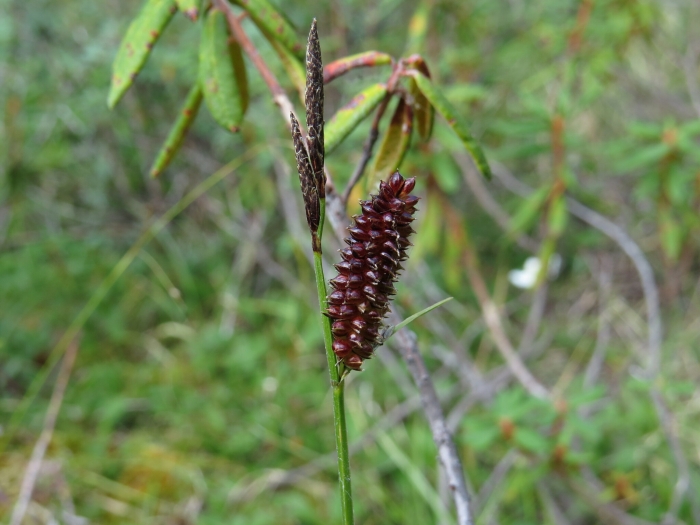Rock Sedge
(Carex saxatilis)
Rock Sedge (Carex saxatilis)
/
/

Jack Bindernagel
CC BY 4.0
Image By:
Jack Bindernagel
Recorded By:
Copyright:
CC BY 4.0
Copyright Notice:
Photo by: Jack Bindernagel | License Type: CC BY 4.0 | License URL: http://creativecommons.org/licenses/by/4.0/ | Rights Holder: Jack Bindernagel | Publisher: iNaturalist | Date Created: 2023-08-01T13:54:03-07:00 |

























Estimated Native Range
Summary
Carex saxatilis, commonly known as Rock Sedge, is a perennial herbaceous plant that thrives in a variety of wetland habitats, including fens, bogs, wet meadows, and along the margins of streams and lakes. It has a circumboreal distribution, occurring throughout the northern latitudes of the Northern Hemisphere, including Alaska, most of Canada, Greenland, and Eurasia. Rock Sedge typically forms dense tufts or clumps that can reach up to 35 inches in height. The plant features staminate (male) spikes above pistillate (female) flowers, which are wind-pollinated and not particularly showy. The foliage is grass-like, with narrow, linear leaves that contribute to its tufted appearance.
Rock Sedge is valued for its ability to stabilize soil and filter water in wetland restoration projects. It is also used in rain gardens and naturalized areas where its tolerance for wet conditions is beneficial. In cultivation, it requires consistently moist to wet soils and can grow in full sun to part shade. While not commonly found in traditional garden settings, it is an important species for ecological plantings and habitat creation. Rock Sedge is generally low-maintenance, but it can spread in ideal conditions, which should be considered when planting.CC BY-SA 4.0
Rock Sedge is valued for its ability to stabilize soil and filter water in wetland restoration projects. It is also used in rain gardens and naturalized areas where its tolerance for wet conditions is beneficial. In cultivation, it requires consistently moist to wet soils and can grow in full sun to part shade. While not commonly found in traditional garden settings, it is an important species for ecological plantings and habitat creation. Rock Sedge is generally low-maintenance, but it can spread in ideal conditions, which should be considered when planting.CC BY-SA 4.0
Plant Description
- Plant Type: Grass
- Height: 1-1.5 feet
- Width: 1-2 feet
- Growth Rate: Moderate
- Flower Color: N/A
- Flowering Season: Spring, Summer
- Leaf Retention: Deciduous
Growth Requirements
- Sun: Full Sun, Part Shade
- Water: High
- Drainage: Fast, Medium, Slow
Common Uses
Bird Garden, Low Maintenance, Water Garden
Natural Habitat
Fens, bogs, wet meadows, and along the margins of streams and lakes
Other Names
Common Names: Russet Sedge
Scientific Names: , Carex saxatilis, Carex ambusta, Carex compacta, Carex ensifolia, Carex ensifolia, Carex ensifolia, Carex fusca, Carex incerta, Carex jungenda
GBIF Accepted Name: